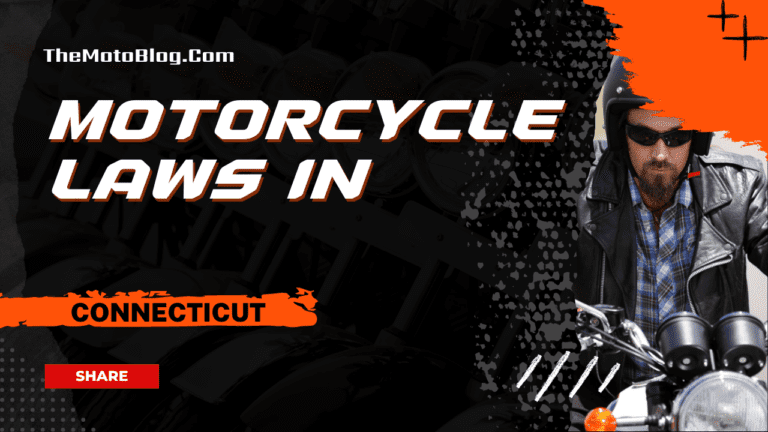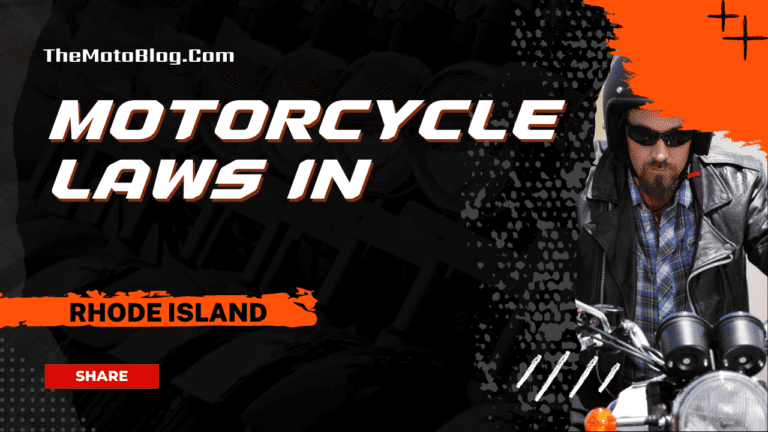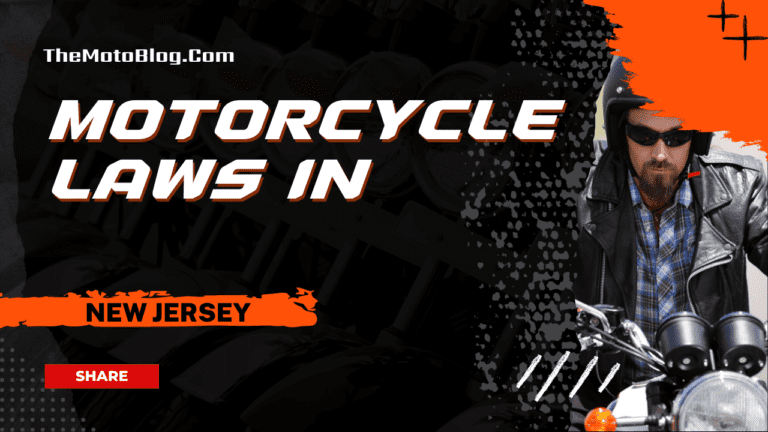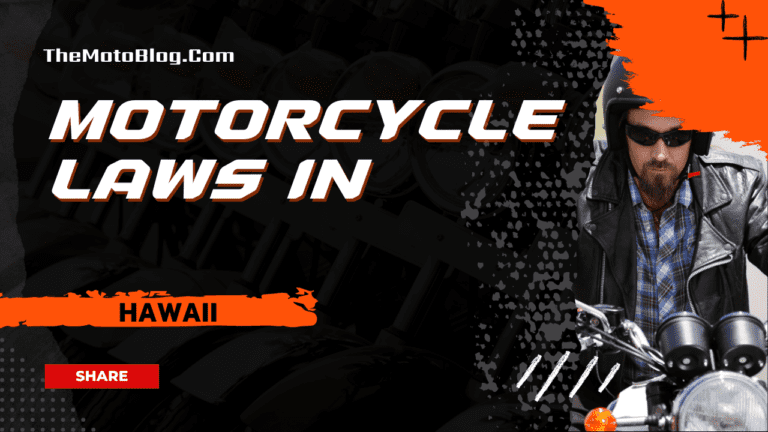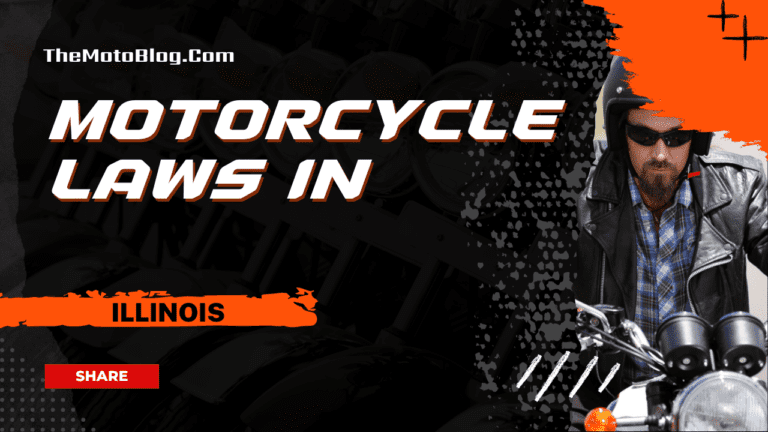Motorcycle Laws in Alaska: A Comprehensive Guide for Riders
Alaska, with its vast wilderness and stunning landscapes, shares borders with neighboring states like Washington and Montana, each with their own unique motorcycle regulations. While planning your scenic rides through these states, it’s crucial to understand their specific motorcycle laws.
The Alaska Department of Motor Vehicles (DMV) implements a three-tier motorcycle licensing system to ensure rider safety and competency. This structured approach aligns with California’s comprehensive licensing system while maintaining its unique requirements for the state’s specific conditions.
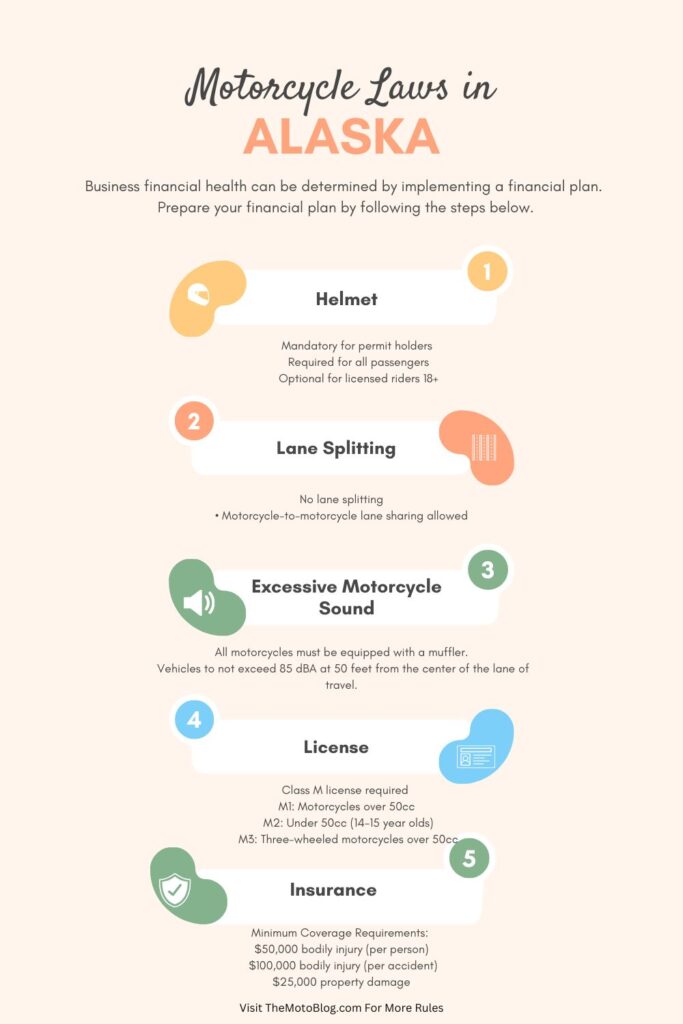
| Category | Requirements |
|---|---|
| Class M License Types | • M1: Motorcycles over 50cc • M2: Under 50cc (14-15 year olds) • M3: Three-wheeled motorcycles over 50cc |
| Age Requirements | • Minimum 14 years for permits • Minimum 16 years for full license • 6-month permit required if under 18 |
| Testing Requirements | • Written knowledge test • Vision test • Road test • Safety course (mandatory under 18) |
| Required Documentation | • Valid ID proof • Parent consent (under 18) • Safety course completion certificate |
| Helmet Laws | • Mandatory for permit holders • Required for all passengers • Optional for licensed riders 18+ |
| Eye Protection | • Required without windscreen • Acceptable forms: glasses, goggles, face shield |
| Lane Usage Rules | • No lane splitting • Motorcycle-to-motorcycle lane sharing allowed |
| Equipment Standards | • Max handlebar height: 15″ above seat • Always-on headlight requirement • Mandatory turn signals • Required passenger footrests |
| Insurance Coverage | • $50,000 bodily injury (per person) • $100,000 bodily injury (per accident) • $25,000 property damage |
| Lighting Requirements | • Multi-beam headlamps • Tail lights • Stop-and-turn signals • Rear red reflector |
| Braking Standards | • Must stop within 25 feet from 20mph • Dry, clear surface standard |
| Excessive Motorcycle Sound Rules | • All motorcycles must be equipped with a muffler. • Vehicles to not exceed 85 dBA at 50 feet from the center of the lane of travel |
| Passenger Requirements | • Permanent two-person seat • Footrests • Handholds |
| License Plate Rules | • Single plate on rear • Current month/year tabs |
| Speed Limits | • Business districts: 20 mph • Residential areas: 25 mph • Other roads: 55 mph |
| Point System | • Violations: 2-10 points • 12 points/12 months = suspension • 18 points/24 months = suspension |
| Off-Highway Registration | • Special registration required • 2 years: $10 • 4 years: $20 • 6 years: $30 |
License Classifications
The state offers three distinct motorcycle license classifications:
- M1: Standard motorcycle license for vehicles over 50cc
- M2: Restricted license for younger riders (14-15 years) operating vehicles under 50cc
- M3: Specifically for three-wheeled motorcycles exceeding 50cc
Age and Testing Requirements
Applicants must meet specific age requirements and complete mandatory testing:
- Minimum age requirements: 14 for permits, 16 for full license
- Six-month permit requirement for riders under 18
- Mandatory testing includes:
- Written knowledge assessment
- Vision screening
- Road skills evaluation
- Safety course completion (mandatory for under-18 riders)
Safety Equipment Regulations
Helmet Laws
Alaska’s helmet laws balance safety with rider choice:
- Mandatory for instruction permit holders
- Required for all passengers
- Optional for licensed riders 18 and older
Protective Equipment Requirements
Essential safety gear includes:
- Eye protection (unless equipped with windscreen)
- DOT-approved eyewear options:
- Protective glasses
- Goggles
- Face shields
Vehicle Operation Guidelines
Lane Usage and Traffic Rules
Clear regulations govern motorcycle operation:
- Lane splitting prohibited
- Motorcycle-to-motorcycle lane sharing permitted
- Equipment specifications:
- Maximum handlebar height: 15 inches above seat
- Mandatory headlight operation
- Required turn signals
- Passenger footrest installation
Insurance and Documentation
Coverage Requirements
Minimum insurance coverage mirrors Oregon’s requirements:
- $50,000 bodily injury (per person)
- $100,000 bodily injury (per accident)
- $25,000 property damage
Equipment Standards
Required Safety Features
Motorcycles must maintain specific safety equipment:
- Multi-beam headlamps
- Functional tail lights
- Stop-and-turn signals
- Rear-mounted red reflector
- Braking system capable of 25-foot stops from 20mph
Penalty System
Traffic Violations
The point system follows structured penalties:
- 2-10 points per violation
- License suspension triggers:
- 12 points within 12 months
- 18 points within 24 months
Off-Highway Vehicle Regulations
Registration Requirements
Special provisions for off-highway vehicles include:
- Mandatory registration
- Tiered registration fees:
- Two years: $10
- Four years: $20
- Six years: $30
When navigating Alaska’s motorcycle laws, proper preparation and understanding of local regulations ensure both compliance and safety. Whether you’re planning routes through neighboring Oregon or California, each jurisdiction has its unique requirements. By staying informed and prepared, riders can fully enjoy Alaska’s breathtaking landscapes while maintaining legal compliance across state lines.
Motorcycle Laws in the US By States
If you liked this article, then please subscribe to our YouTube Channel for more Bike Videos. You can also find us on Instagram, Twitter and Facebook.
Disclosure: As an Amazon Associate, I earn from qualifying purchases. Read more about Amazon Affiliate Disclaimer.

Vishwanath Mathpati
I am Vishwanath Mathpati, a full-time Blogger and Motorcyclist from Bidar, Karnataka. I love writing about my Motorcycles Stories and Riding Gears on this blog.
Know More About Me.


